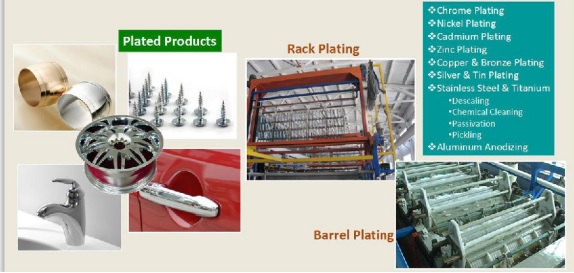Electroplating is the process of applying a thin layer of other metals or alloys on the surface of certain metals by electrolysis. It is a process of applying a metal film to the surface of metals or other materials to prevent metal oxidation (such as rust), improve wear resistance, electrical conductivity, reflectivity, corrosion resistance (copper sulfate, etc.) and enhance aesthetics.
Types of plating:
- Copper plating: priming, enhance the ability to adhere to the plating layer, and the ability to resist corrosion. (Copper is easy to oxidation, oxidation, copper green no longer conductive, so copper-plated products must do copper protection)
- Nickel plating: priming or appearance, to enhance the corrosion resistance and wear resistance, (where the chemical nickel for the modern process of wear resistance than chrome plating). (Note that many electronic products, such as DIN head, N head, no longer use nickel priming, mainly because nickel is magnetic, will affect the electrical properties inside the passive intermodulation)
- Gold plating: improve the conductive contact impedance, enhance signal transmission. (Gold is the most stable, but also the most expensive.)
- Palladium-nickel plating: improve the conductive contact impedance, enhance signal transmission, wear resistance than gold.
- Tin-lead plating: improve soldering ability, soon to be replaced by other substitutes (because of the lead content is now mostly changed to bright tin and mist tin plating).
- Silver plating: improve the conductive contact impedance, improve signal transmission. (Silver performance is the best, easy to oxidation, oxidation also conductive)
